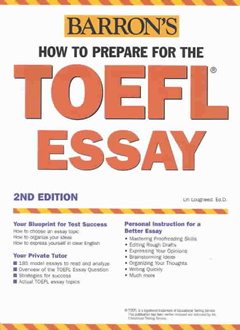本文将为您介绍SAT Essay写作的5个关键点,分别是:创建自己的万用模板、研究琢磨你写的25个默认案例、创建一个给力的命题,为您的命题作出转换、创建一个有趣而强大的结论,好了,下面我们来看看具体怎么操作。
1. Create your own template – aka “Universal Template.”
2. Research your 25 default examples.
3. Learn to write a strong thesis sentence:
4. Work on transitions.
5. Create an interesting introduction and a strong conclusion.
Having taught classes on how to take the SAT for more than 10 years now, I find the SAT essay section to be the easiest and most predictable section of the test. The cool thing about this section is that the College Board can only test you on a limited range of prompts and your response(s) can be customized, prepared, practiced, and mastered. I am not talking about cheating on the SAT, but being prepared for all possible scenarios, to the point that nothing can surprise you.
Many academies and private tutors claim that you cannot prepare a specific essay on a particular topic in advance, but I disagree. This section of the SAT can indeed be predicted, prepared, and mastered before you even step into the test site.
The SAT Essay: The 80:20 Rule
Let’s take a scientific approach to the SAT essay. Unlike the math section of the SAT, the verbal section is feared by many students because of the abundance of advanced vocabulary, grammar rules, unpredictable reading genres, and essay prompts.了解Essay代写相关服务?登录Bonrun官网:www.lxws.net
Students frequently ask:
1. How many SAT words should I memorize?
2. Which books should I read to prepare for the critical reading section?
3. How about dictions and idioms? How many are there?
4. Can I predict possible essay prompts?
5. Can I guarantee at least a double-digit score on my essay?
My responses are:
1. 3,000-5,000, depending on your previous exposure to the SAT
2. Combination of novels, magazines, journals, and textbooks (Ryan’s Top 10 Picks)
3. Less than 100 idioms and dictions
4. Absolutely!
5. Absolutely, yes!
My approach is this: Instead of trying to figure out what prompts and/or passages to expect, why not concentrate on the design of the SAT itself – in this case the SAT essay – so no matter what is thrown at you, you are not easily surprised and you can calm yourself by having a step-by-step plan already in place.
So, I came up with the “80:20 Rule.” This rule applies not only to the SAT, but also to the ACT, GRE, and GMAT. The concept is simple: Find ways to predict and prepare for 80% of the test, and only worry about 20% (which can also be mastered) during the test. How? Simple. Again, learn the design, put yourself in the College Board’s shoes, and learn the tricks so you don’t fall into the traps. I will give you plenty of examples and guidelines, so don’t panic!
Basics of the SAT Essay
1. You are only given 25 minutes to complete the essay. But trust me … when you take the real test, it’s not going to feel like a whole 25 minutes. Make sure you give yourself less time when practicing (16-18 minutes), so you can build up mental and physical stamina.
2. Be aware of the psychological effect of section 1. The essay will always be the first section of the SAT. If you mess it up for whatever reason, it’s going to haunt you for the rest of the test. But if you nail it, you will gain the confidence to continue to the rest of the sections.
3. Many academies say it is OK to use “I” but again … I say no. Although “I” is acceptable to express your personal point(s) of view, it weakens your thesis. If you begin with “I believe,” you are presenting your personal, fundamentally biased opinion – therefore, avoid using “I” if possible.
4. Essays are scored by two graders. Each grades on a scale of 1-6 (for a total of 12). Remember, though, that each grader has only a minute or so to read and grade your essay. That is why highlighting certain sections of your essay might do the trick to help you succeed.
5. Do not veer off topic! Answer the question. If you don’t, you will receive a grade of zero. Believe me … I have seen it happen.
6. Your essay equals 1/3 of your writing score: +/- 250. So, it is crucial that you do well!
How to Prepare for the 80:20 Rule
There are 10 steps you must learn and master. Once you have your own custom-made template, 25 quality examples, 3 to 5 transitions, and detail plug-ins, you are ready to tackle all possible prompts.
Key Terms:
1. Universal Template: A pre-built template/structure that you can use to write your essay.
2. 25 Quality Examples: Edison, JFK, and Hitler are elementary examples. They are trite, and most graders will not be impressed by them. Use high-quality examples, such as Jack Welch, Howard Schultz, Steven Jobs, the Enron scandal, the Patriot Act, etc. Remember! Graders get only a minute or so to read and grade your essay. You must do everything possible to impress them.
3. Transitions: There are pre-built transitions that you can easily pick and choose to smooth out the flow of your essay. I will give you some examples as we go.
4. Plug-ins: Plug-ins are all details that were pre-researched, pre-written, and memorized – ready to be used at a moment’s notice.
So, Here Are the 10 Steps:
Step 1 (20 seconds): Brainstorm and come up with three to five quality examples.
Do not choose a side before you come up with examples. This is extremely important because without examples you will not be able to complete your essay. In other words, your opinion does not matter unless you can support it. Let your examples dictate which side you choose – not the other way around.
Step 2 (10 seconds): Agree or disagree with the prompt.
Now that you have three to five examples, it is time for you to take a stance. Agree or disagree with the prompt. If it is an open-ended question, by now you should have come up with a response.
Step 3 (1 minute): Write your thesis:
Follow this simple formula to write you thesis. Later, you will be allowed to make it more personal by adding adjectives, examples, etc., but for now, I want you to stick with this. Why? To create a backbone to your thesis writing so you know exactly what to do and what not to miss.
First, start with the keyword. If the prompt is: “Honesty is always the best policy,” then start with “honesty” so your reader/grader knows that you are on point. After your keyword, immediately agree or disagree with the prompt.
For example: Honesty is crucial … (Agree) OR Honesty can be detrimental … (Disagree). Once you’ve done this, then you have to explain the Why and the How. Without this step, all you are doing is repeating the prompt. You must explain why you agree or disagree with the prompt.
For example: Honesty is crucial to build and maintain trust.
Bad Intros:
1. Ladies and gentlemen of the College Board …
2. What would Jesus do? …
3. Once upon a time …
4. “Failure is the mother of success!!!” …
By the way, I have actually seen these introductory phrases written by real students. Please, don’t make the same mistake.
Step 4 (1 minute): Complete your introduction.
Now spend a minute or so completing your introductory paragraph. Make sure you write at least two sentences but no more than three, as you’ll run out of time.
My version:
For example: Honesty is crucial to build and maintain trust. Several examples from literary works and current events clearly demonstrate that honesty always prevails.
That’s it. Two sentences are good enough for the SAT essay. I am not saying don’t write more, but there is no need to write five to six sentences. It’s important that you move on since you only have 25 minutes to complete a full-length essay. Remember! This is not your typical school essay, in which you have to develop your thesis and write your thesis at the end of your introductory paragraph. The SAT essay does not work that way. You must get straight to the point, answer the prompt/question, and move on to your examples. That’s the only way you’ll finish on time. Also, it is important to remind you that readers/graders know that you were given only 25 minutes to complete your essay. They will be lenient and not penalize every grammatical error. Readers/graders, however, will penalize you for excessive patterns of spelling and grammar errors – I mean … who wouldn’t?
Step 5 (1 minute): Write your transitional thesis: .
It is time to introduce your first example. Avoid being abrupt. Start with a transitional phrase that will smoothly transition from your introduction to your body paragraph 1.
Here are some recommended transitional phrases:
1. As demonstrated by …
2. As shown by …
3. In the novel 1984 by George Orwell, …
4. In the film Metropolis by Fritz Lang, …
5. Through the actions of …
6. , Description, …
Then you have to add a modified version of your thesis. You need to add your example and blend it with your thesis to make it more relevant.
For example: In the novel 1984 by George Orwell, Winston’s rebellious thoughts/actions are direct results of the party’s deceptive/dishonest political tactics.
Step 6 (2 minutes): Use accelerated plug-in 1.
This is where the 80:20 Rule really shines. Now that you have pre-researched and memorized all details related to your example(s), it’s time to make full use of them and plug them in to build volume and persuasive content. Give yourself two minutes to write at least six sentences of pure supportive details/content. Of course, all details/content must be relevant to the prompt! If not, you are padding; that will get you not a zero, but somewhere in the 2-4 range.
Important: Make sure you pepper your plug-in with some statistics, full names, and dates – a sure tactic to impress your graders.
AWFUL: “Students should not play PS3 because my mom told me so!”
BAD: “Students should avoid playing PS3 because I play it three to four hours a day and my GPA is 2.5”
OKAY: “Students should avoid playing PS3 as it may lead to a lower GPA, dependency/addiction to gaming, and distraction from other important activities/duties.”
GOOD: “According to the National Behavioral Research Center (NBRC), students who play PS3 for more than an hour a day will likely develop a Game Dependency Syndrome, which will negatively affect students’ GPA their chances of getting into college.”
Step 7 (1 minute): Provide personal Input (PI).
Now that you’ve plugged in everything you know about your first example, it’s time to make some sense out of it and tie your plug-ins back to the prompt. Without a clear explanation and/or justification of why you plugged in those details, your paragraph will just be a copy-pasted version of Wikipedia.
Write one to two sentences – in your own words – about how your plug-ins help support your thesis.
Suggested transitions:
1. Therefore,
2. Hence,
3. Thus,
For example: Therefore, Winston’s actions prove that (government/leaders/country/party’s) dishonesty/deception can lead to societal/widespread chaos and rebellion.
Step 8 (8 minutes): Repeat the above process two times.
Remember! You need three examples/three body paragraphs – not two. Providing three examples/body paragraphs is another way to guarantee a double-digit score.
Step 9 (2 minutes): Write a strong conclusion: The power of “indeed.”
Your conclusion is extremely important as it is the final piece of information graders will read before grading your essay. Think of it as the last impression you leave on your graders – the stronger it is, the higher the score. Your conclusion must be succinct, to the point, and, most importantly, well crafted. By this, I mean that you should not leave such an important part of your essay up to improvisation. You must pre-plan for this and create multiple plug-ins.
For example: After a careful analysis of X, Y, Z (Plug-ins), Keyword is “indeed” Modified Thesis…
For example: After a careful analysis of 1984, Of Mice and Men, and Fahrenheit 451, one can see that honesty is, indeed, the best policy in building and maintaining long-lasting trust. Without honesty, societies can fall into chaos. Staying true to one another is the only way to prevent such destructive happenings/occurrences.
Step 10 (1-2 minutes): Whew! You’re almost done.
All you need to do now is go back and make sure you did not make any silly mistakes. Spend a minute or so revising and proofreading your essay. I’ve seen so many silly mistakes from my students that I must ask you to not make these same mistakes.
Sample Template
Q: Is honesty always the best policy?
Honesty is crucial to build and maintain trust.Several examples from history/current events/science/literary works clearly demonstrate that KEYWORD…
As demonstrated by EXAMPLE 10,.……………….……………..(six sentences)……………………………….Therefore/Hence/Thus …
After a careful analysis of X, Y, and Z, KEYWORD is INDEED crucial to…Had X, Y, Z been KEYWORD, they would have/not have …
Universal Template
Make sure the template you build can be applied to all possible prompts. The key is to make it generic/broad enough. For example, Intro Plug-In: “Several examples from…” is generic enough that you can use it no matter what the prompt.
Time Management
Give yourself less time during practice; 16-18 minutes should do to simulate the real test. Trust me … when you take the real test, it is not going to feel like a whole 25 minutes. Because of all the pressure and anxiety, you will feel rushed – thus, 16-18 minutes are perfect to prep for this section.
Subjective Nature
Graders are humans after all, and there is no way of predicting how they will react to your essay. That is why relying on a proven template is a safer way to go than improvising during the test. Avoid using controversial examples such as those relating to religion, politics, race, and gender. You never know who will be reading and grading your essay.
Length
Simply put – length matters. No matter what the makers of the SAT say, it is a fact that longer essays reflect more profound knowledge of the subject matter. I find that length and thesis are the two most important factors in determining an essay’s grade. Do not leave any space if possible.
Legibility
Make sure your essay is readable. I have seen some horrible handwriting and I have given them mostly 6s and 8s, depending on what I could get from the essays. Write legibly and make sure that your writing is not too big or too small.
Vocabulary
Too many students make the mistake of using excessive SAT words in hopes of impressing the graders. Don’t be a pretender! only use those words that you are comfortable using. Sometimes, it is better to just use simple words as long as you can get your point across. 本文转载自网络








